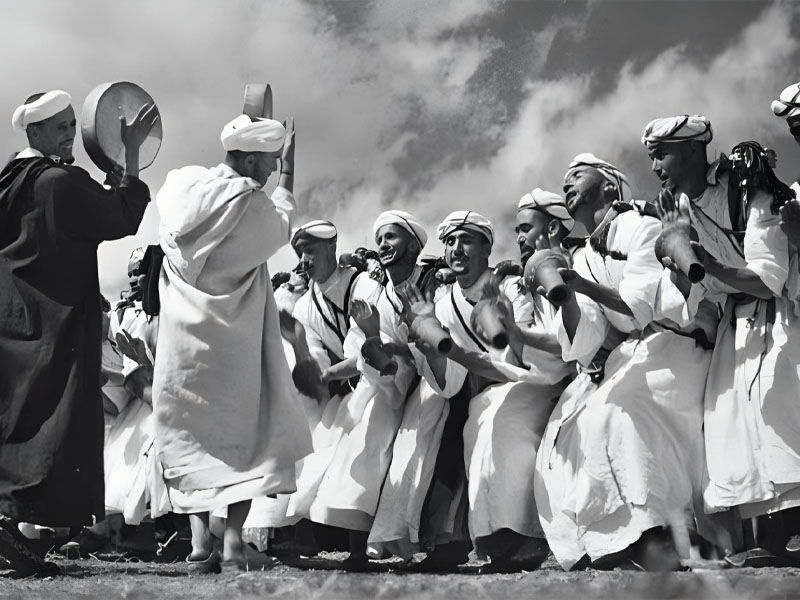Towards A Cultural Understanding of Folklore Moroccan Group Dance as a Model
Issue 48

Dr. Abdul Fattah Shahid
Professor of Criticism, Hassan I University, Kingdom of Morocco
This paper seeks to highlight the role of folklore in achieving cultural development and to highlight the cultural richness of a society. The role enhances the identity and cultural values of people in the community. The paper seeks to utilize the cultural analysis of folk arts and folk culture.
The paper studies the relation between values and cultural practices as well as cultural institutions. In addition, it explores the values of rejection of domination, and the values of enhancing the collective - family, tribe and nation. Such values enhance local cultures, folklore and indigenous art.
The study explores Moroccan group dance as an integrated discourse that holds different genres and cultural perspectives.
Group dances in traditional folklore cannot be seen merely as movements in isolation and outside of social context; their words are not mere expressions unrelated to the interests and concerns of the group; and their rhythms are not simply beats to enjoy and pass time. They are rather cultural practices established in the conscience and heart of individuals for generations. These dances have a vital role in preserving the collective identity and heritage. They elegantly represent the values of heroism, work, cooperation and justice, and help in supporting art and culture through exploring the group’s perspectives of life and existence.
Folk dance is a term generally used to describe the forms of dance that are common among different peoples often because they have similar origins. Therefore, folk dance in general is an important way to translate people’s feelings and beliefs and reveal their aesthetic choices and their cultural and intellectual possessions.
The Moroccan collective dances are characterized by their integrated discourse that embrace poetry, singing, music, movements, customs, dressing, cuisine, various works and trades. The dancing and singing are symbols of the cultural elements of the Monrovian society and they highlight linguistic and philosophical aspects of either the dancers and singers themselves or the audience or society as a whole.
Folk art and group dancing are artistic manifestations of aesthetic and social values. The cultural reading of them enables us to explore collective identity and heritage, and unveil the values of resistance, group defence, and appreciation for women, cooperation and solidarity. These values as well as others are passed from one generation to another and adopted by individuals of the society.
In our days, these values acquire new dimensions with the spread of new technologies and social media; a subject we would like to address in future articles.







































































